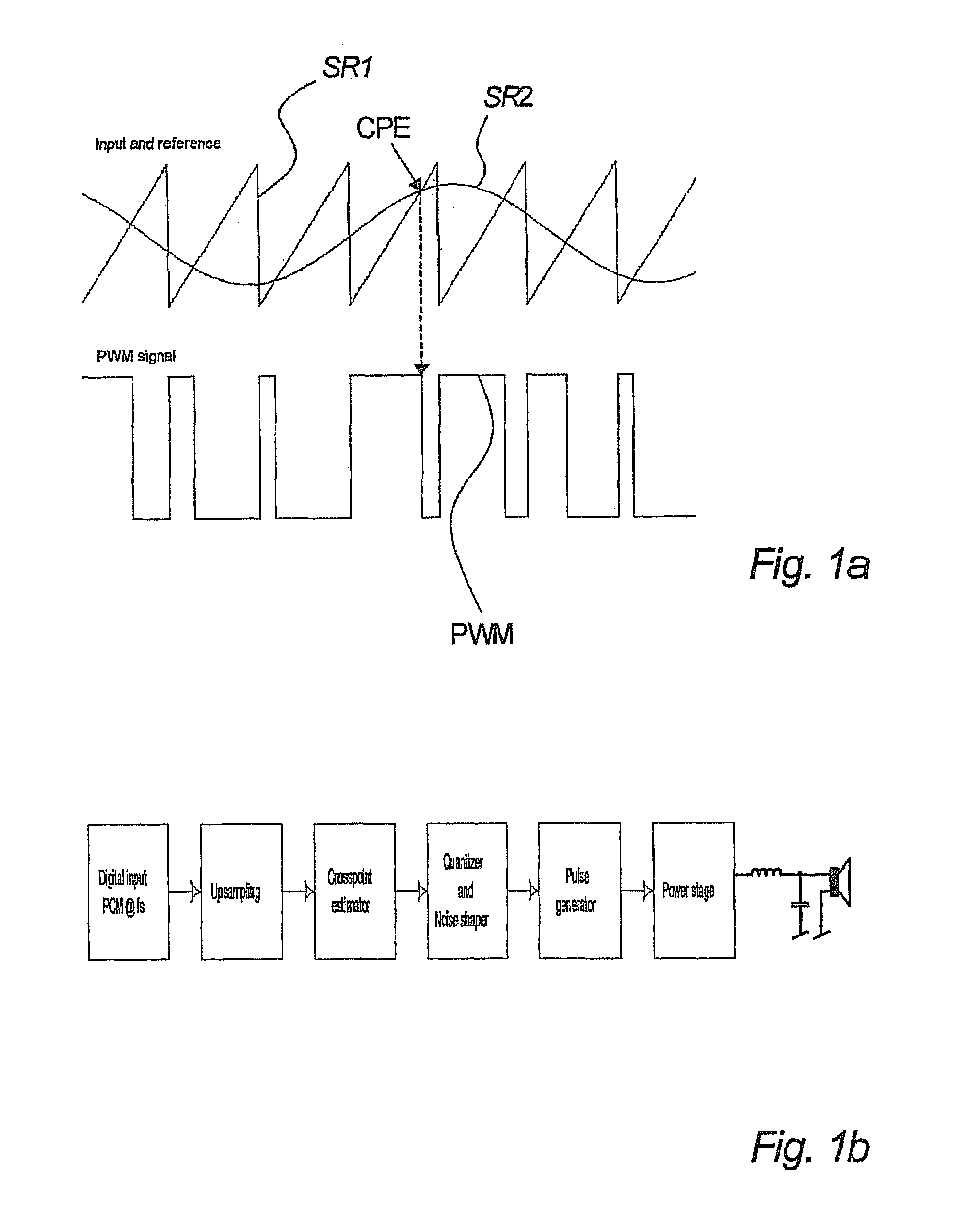Method of estimating an intersection between at least two continuous signal representations
a continuous signal and estimate technology, applied in the field of establishing an intersection estimate between two functions, can solve the problems of relatively computationally inefficient division operations, low computational efficiency, and low computing cost, and achieve the effects of improving pwm-modulation, computational efficiency, and low harmonic distortion
- Summary
- Abstract
- Description
- Claims
- Application Information
AI Technical Summary
Benefits of technology
Problems solved by technology
Method used
Image
Examples
Embodiment Construction
[0129]FIG. 1a and 1b illustrate the basic properties and the nature of PWM modulation.
[0130]It should be noted that the invention in general might be regarded as the establishment of an intersection estimate between at least two curves by means of computer calculations, where at least one of the curves is a non-linear function. One of several applications is within PWM (pulse width modulation) modulation, and the following explanation refers to an application within this technical field.
[0131]The two signal representative curves SR1 and SR2 represent a PWM reference signal and a PWM input signal, respectively.
[0132]In the time continuous domain a PWM signal, i.e. the signal of FIG. 1b is obtained by comparing the input signal representation with e.g. the output of a sawtooth generator. When the input signal is higher than the reference signal representation SR1, here a sawtooth, the PWM output is high and when the input signal is lower than the reference, the PWM output is low.
[0133...
PUM
 Login to View More
Login to View More Abstract
Description
Claims
Application Information
 Login to View More
Login to View More - R&D
- Intellectual Property
- Life Sciences
- Materials
- Tech Scout
- Unparalleled Data Quality
- Higher Quality Content
- 60% Fewer Hallucinations
Browse by: Latest US Patents, China's latest patents, Technical Efficacy Thesaurus, Application Domain, Technology Topic, Popular Technical Reports.
© 2025 PatSnap. All rights reserved.Legal|Privacy policy|Modern Slavery Act Transparency Statement|Sitemap|About US| Contact US: help@patsnap.com



